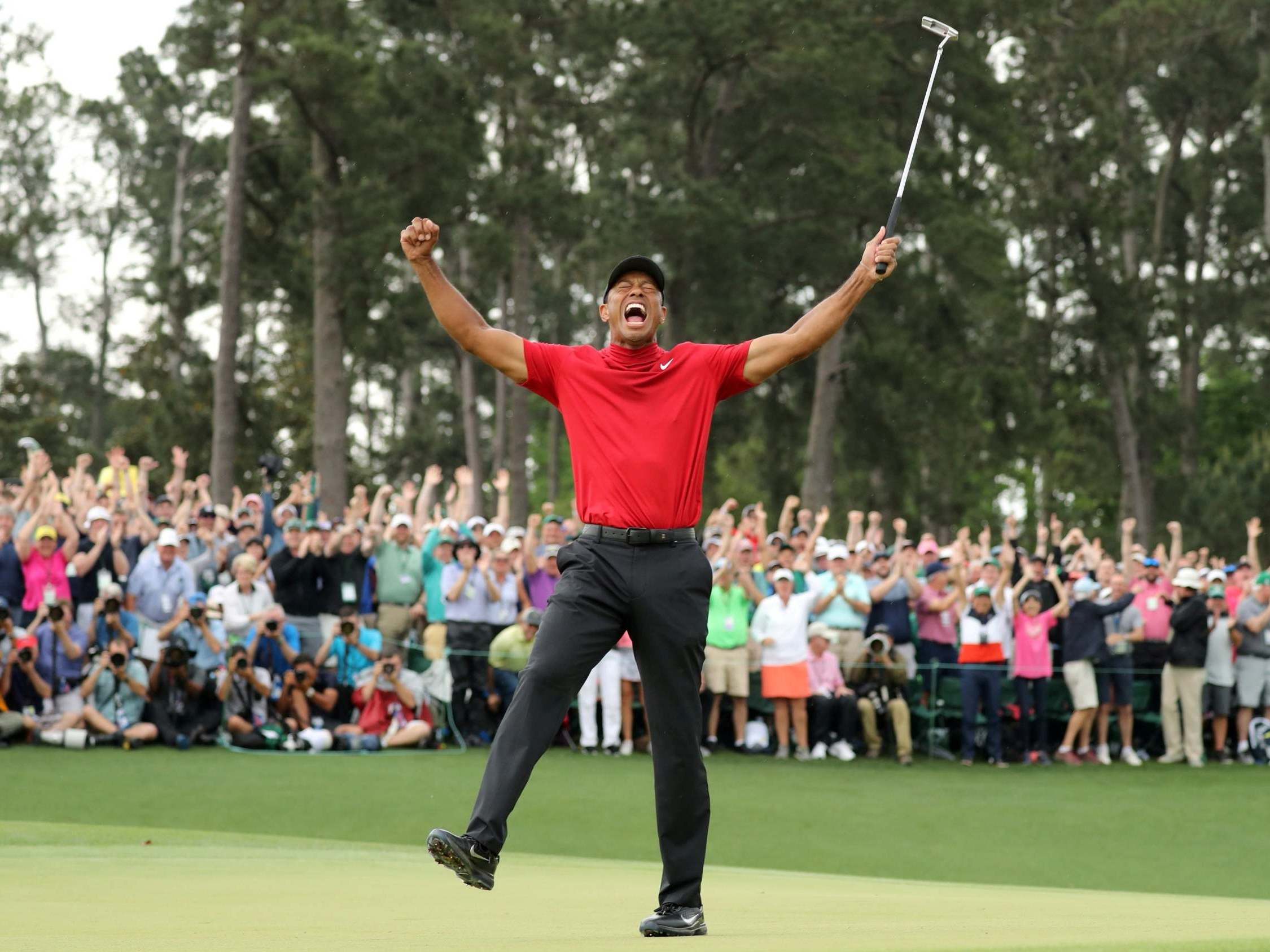Golf in 2019: Tiger Woods’ iconic Masters victory casts glorious shadow
American's 15th major win crowned a year complete with iconic victories and fairy tales

Your support helps us to tell the story
From reproductive rights to climate change to Big Tech, The Independent is on the ground when the story is developing. Whether it's investigating the financials of Elon Musk's pro-Trump PAC or producing our latest documentary, 'The A Word', which shines a light on the American women fighting for reproductive rights, we know how important it is to parse out the facts from the messaging.
At such a critical moment in US history, we need reporters on the ground. Your donation allows us to keep sending journalists to speak to both sides of the story.
The Independent is trusted by Americans across the entire political spectrum. And unlike many other quality news outlets, we choose not to lock Americans out of our reporting and analysis with paywalls. We believe quality journalism should be available to everyone, paid for by those who can afford it.
Your support makes all the difference.The noise was unlike anything Augusta has ever heard. The portrait too, of Tiger Woods’ arms raised in the centre of the 18th green, a spent God reclaiming his old world, might be the most iconic golf ever painted. Woods reborn – warmer and weaker, more emotional and vulnerable – yet still stealing the sport’s every breath. Eleven years after his last major victory, four spinal surgeries later, it will forever be remembered as one of the greatest moments in sporting history.
Perhaps it is cruel that over time history will remember golf in 2019 simply by those four minutes of celebration. The way Woods cast his putter aside after the winning putt, the cathartic roar and the crowd’s worshipping screams. The tearful hugs with his family on the same spot he embraced his late father, Earl, when he won his first Masters 22 years earlier, and the procession through a parted sea of supporters back to the clubhouse.
“I never thought we’d see anything to rival the hug in ’97,” came the stunned voice of Jim Nantz.
“That will be the greatest scene in golf, forever,” Nick Faldo replied.
Maybe, it was. Not the most significant. It certainly didn’t reshape the sport in the way his dominant victory by a dozen shots at Augusta had in the past. But, back then, Woods was colder and guarded. His belated return to those heights was built on a raw and unfamiliar emotion everybody could buy into.
It was almost a decade since his car struck the fire hydrant outside his home in Florida. The cue for a tale of sordid personal unravelling that still defines him to a younger generation; the agonising injuries, desperate surgeries, and slow months in rehab; his sullen, puffed face pasted across the cover of the world’s tabloids just 23 months ago, addicted to the opioids that brought mercy to his back.
For so many years Woods had commanded golf by his distance, and then his absence. As he bit back the tears in Butler’s Cabin, he finally allowed the world a glimpse into the man behind the mask. They are the well-told components to one of the most remarkable comebacks ever known, but also why that victory will always be remembered more fondly than those which came before.
It is a year that will forever belong to Woods, his glorious shadow cast over golf once again, and yet there were so many others who shone too. It could have been Shane Lowry’s. His brilliance, withstanding a biblical tide of weather that washed away his opponents at Royal Portrush, was one of golf’s most romantic victories. The first Open Championship to be held in Northern Ireland in 68 years, only made possible by a “political miracle”, won by a well-liked figure from the south who, no matter how briefly, transcended golf on the island.

There was Europe’s defiant Solheim Cup winners upsetting an overpowered American side 14.5-13.5 in a nailbiting finish at Gleneagles and retiring captain Catriona Matthew's own iconic celebration.
Or what of Brooks Koepka, winning the PGA Championship to claim a fourth major in eight starts. He continues to concrete himself as Woods’ closest heir, with the same deadness in the eye and transformative – near brutish – physicality. When his armour cracked like never before at Bethpage Black, almost capitulating with a seven-shot lead, he chipped into another layer of resilience. He remains and ends the year as the greatest golfer in the world today.
His blossoming rivalry with Rory McIlroy, in many ways Koepka’s polar opposite, showed yet more promise of keeping golf ignited in Woods’ eventual absence. The Northern Irishman was as mercurial as ever in a year of relentless success and embarrassing falls as victory at the Players’ and Tour Championship were countered by his crumbling at Portrush, scoring an eight on the opening hole and missing the cut. His wait for an elusive fifth major goes on.
There was the unparalleled consistency of Jin Young Ko winning two majors and going 114 holes without recording a single bogey - outlasting Woods' own record of 110. There was the history of a first women’s amateur event at Augusta too; a country club finally being forced to let its archaic attitudes crumble.
For a sport so often accused of being slow-motion or mundane, they are just some of the moments which have illuminated golf this past year.
And yet, its essence continues to orbit around one man just as powerfully as ever. Whether it’s been engraved on trophies, splashed across front pages or written in medical diaries, for over two decades it’s always been that way. When history looks back on 2019, when all else has melted away, it is Woods' celebration that will never be forgotten.
Join our commenting forum
Join thought-provoking conversations, follow other Independent readers and see their replies
Comments